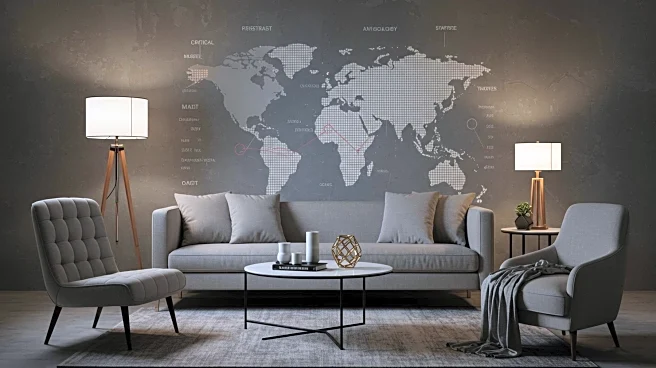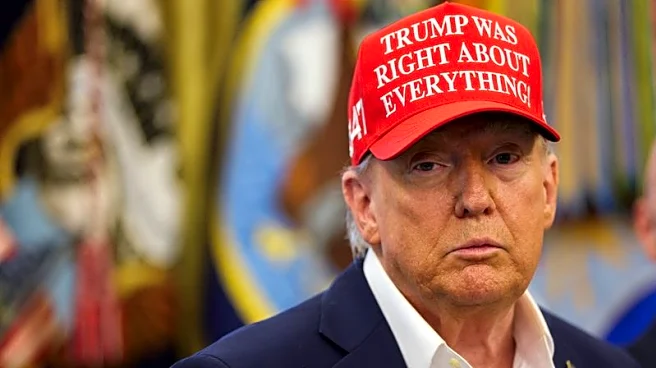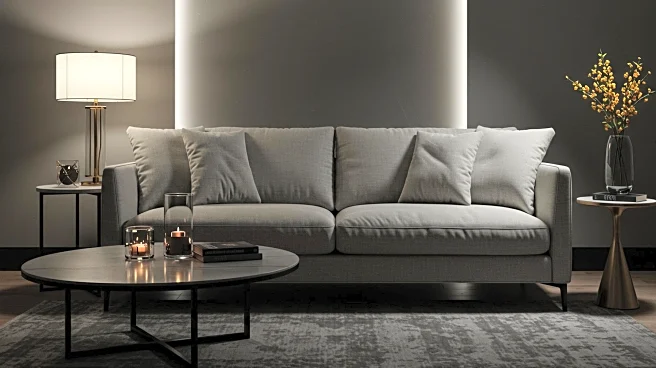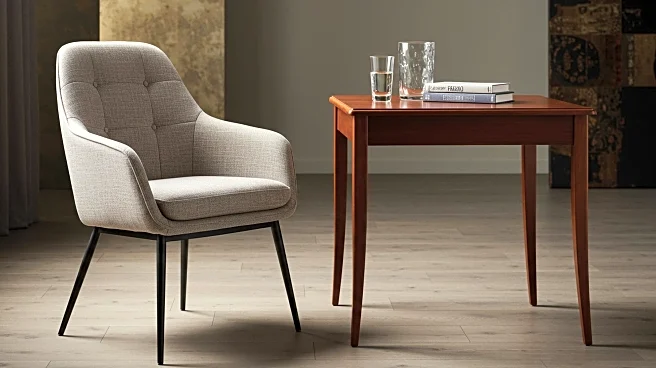What's Happening?
President Trump has announced a potential increase in tariffs on furniture imports into the United States. This move is part of an ongoing investigation into foreign furniture imports, with a decision expected within 50 days. The proposed tariffs aim to boost domestic manufacturing in states like North Carolina, South Carolina, and Michigan. However, the announcement has already affected the market, with shares of major furniture retailers like RH and Williams Sonoma dropping significantly. The Italian furniture industry, a major exporter to the U.S., is particularly concerned, as the uncertainty has already led to a decline in exports. The European Union and the U.S. had previously reached a trade agreement in July, setting tariffs on EU exports at 15%, but the new proposal could disrupt this arrangement.
Why It's Important?
The proposed tariff increase could have significant implications for the global furniture industry and U.S. trade relations. For American consumers, higher tariffs may lead to increased prices for imported furniture, affecting purchasing decisions. Domestically, the policy is intended to revitalize American manufacturing, potentially creating jobs and boosting local economies. However, it also poses risks to international trade relationships, particularly with European countries like Italy, which rely heavily on exports to the U.S. The uncertainty surrounding the tariffs could lead to market volatility and impact small and medium-sized businesses that depend on international trade.
What's Next?
The next steps involve the completion of the investigation into furniture imports, which will determine the final tariff rates. Stakeholders, including international trade partners and domestic manufacturers, are likely to lobby for favorable outcomes. The European Union may seek to negotiate further to protect its industries, while U.S. businesses may prepare for potential changes in supply chains. The outcome of this tariff decision could set a precedent for future trade policies under President Trump's administration, influencing global trade dynamics.
Beyond the Headlines
The tariff proposal highlights broader issues of trade protectionism and its impact on global supply chains. It raises questions about the balance between protecting domestic industries and maintaining healthy international trade relationships. The move could also influence other sectors beyond furniture, as countries may retaliate with their own trade barriers. Additionally, the focus on 'Made in America' could lead to shifts in consumer behavior and corporate strategies, as companies reassess their production and sourcing practices.












